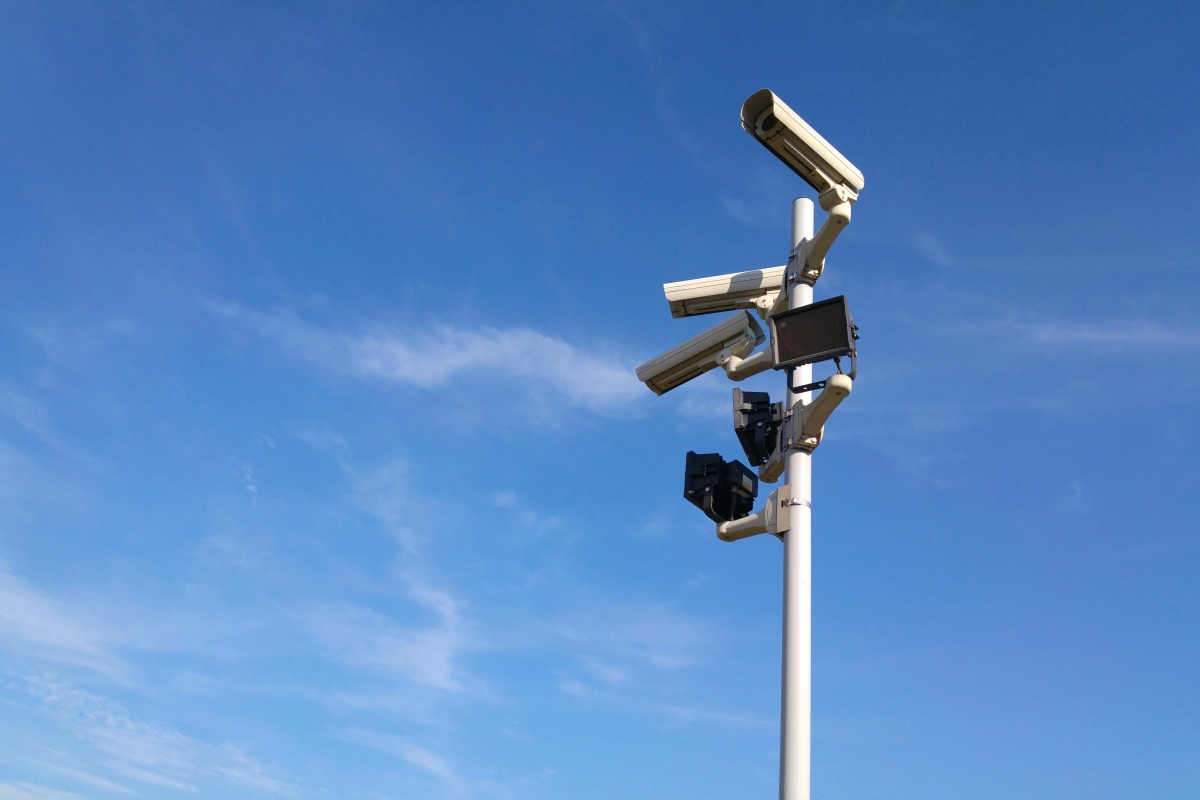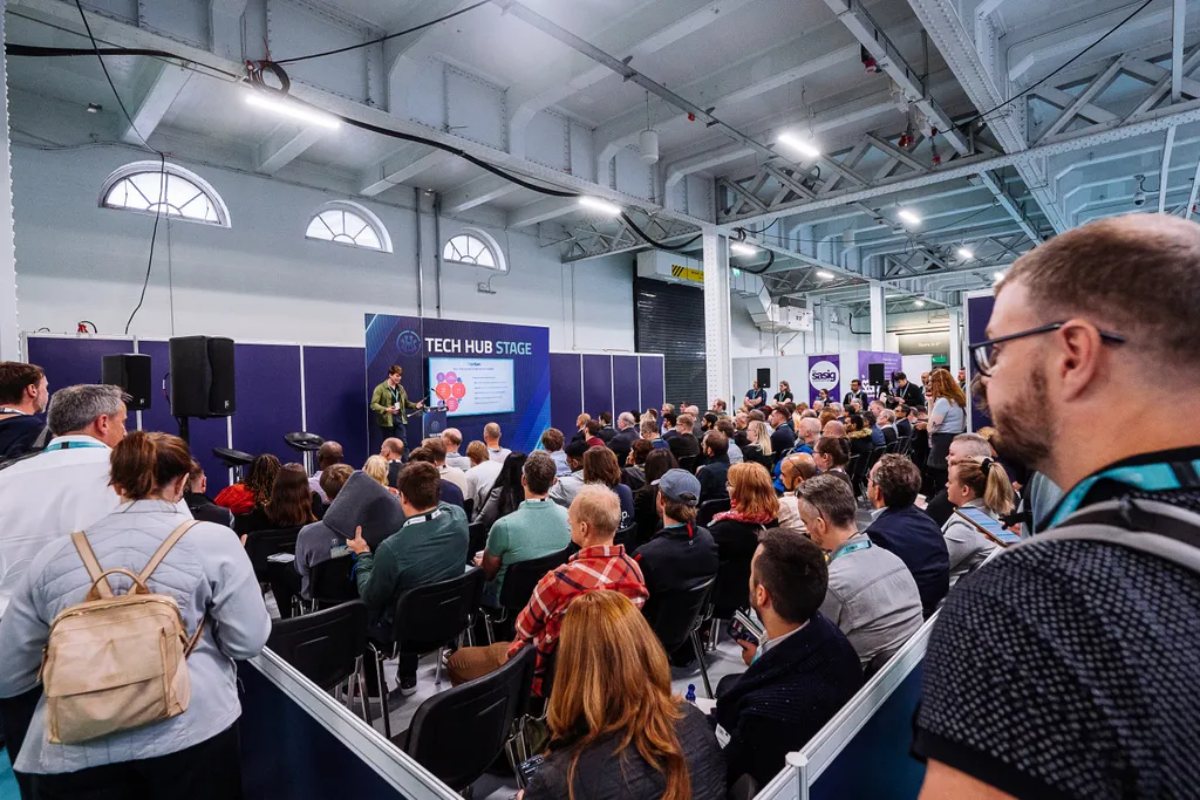Cyber Security Insights for Resilient Digital Defence
Cyber Security Insights for Resilient Digital Defence
Data Centre Security: Protecting Infrastructure from Physical and Cyber Threats
Features
News in Cloud Computing & Data Storage
OpenNebula, Canonical partner on cloud security
OpenNebula Systems, a global open-source technology provider, has formed a new partnership with UK developer Canonical to offer Ubuntu Pro as a built-in, security-maintained operating system for hypervisor nodes running OpenNebula.
The collaboration is intended to streamline installation, improve long-term maintenance, and reinforce security and compliance for enterprise cloud environments.
OpenNebula is used for virtualisation, cloud deployment, and multi-cluster Kubernetes management. It integrates with a range of technology partners, including NetApp and Veeam, and is supported by relationships with NVIDIA, Dell Technologies, and Ampere.
These partnerships support its use in high-performance and AI-focused environments.
Beginning with the OpenNebula 7.0 release, Ubuntu Pro becomes an optional operating system for hypervisor nodes.
Canonical’s long-term security maintenance, rapid patch delivery, and established update process are designed to help teams manage production systems where new vulnerabilities emerge frequently.
Integrated security maintenance for hypervisor nodes
With Ubuntu Pro embedded into OpenNebula workflows, users will gain access to extended security support, expedited patching, and coordinated lifecycle updates.
The approach aims to reduce operational risk and maintain compliance across large-scale, distributed environments.
Constantino Vázquez, VP of Engineering Services at OpenNebula Systems, explains, “Our mission is to provide a truly sovereign and secure multi-tenant cloud and edge platform for enterprises and public institutions.
"Partnering with Canonical to integrate Ubuntu Pro into OpenNebula strengthens our customers’ confidence by combining open innovation with long-term stability, security, and compliance.”
Mark Lewis, VP of Application Services at Canonical, adds, “Ubuntu Pro provides the secure foundation that modern cloud and AI infrastructures demand.
"By embedding Ubuntu Pro into OpenNebula, we are providing enterprises [with] a robust and compliance-ready environment from the bare metal to the AI workload - making open source innovation ready for enterprise-grade operations.”
Joe Peck - 2 December 2025
Cyber Security Insights for Resilient Digital Defence
Data Centre Infrastructure News & Trends
Data Centre Security: Protecting Infrastructure from Physical and Cyber Threats
Enterprise Network Infrastructure: Design, Performance & Security
Macquarie, Netskope partner on network security in Australia
Macquarie Telecom, an Australian provider of data centres, cloud services, cybersecurity, and telecommunications, part of Macquarie Technology Group, has announced a partnership with Netskope to simplify how Australian organisations secure and manage data, cloud, and AI applications.
The collaboration combines Netskope’s Security Service Edge (SSE) platform with Macquarie Telecom’s software-defined wide area network (SD-WAN). Together, these form a Secure Access Service Edge (SASE) framework, offering integrated networking and security functions for organisations adopting cloud services and AI.
Addressing cybersecurity pressures
Australian businesses have faced repeated data breaches in recent years, prompting tighter cybersecurity regulation and greater demands on IT teams.
The partnership aims to provide unified security and network management, helping organisations protect users and data across different environments.
Netskope’s platform consolidates web, data, cloud, and AI security into a single system, designed to reduce costs and balance protection with performance. It is IRAP-assessed at the PROTECTED level for use within Australian Government departments and critical industries.
The combined service also supports compliance with the Security of Critical Infrastructure (SOCI) Act and the Essential Eight framework.
Luke Clifton, Group Executive for Macquarie Telecom, says, “Organisations big and small are under immense pressure to strengthen their cyber defences while keeping operations simple and manageable.
"By joining forces with Netskope, we’re giving customers a smarter, more resilient network backed by integrated, enterprise-grade security. They’re getting the best of both worlds.”
Tony Burnside, Senior Vice President and Head of APAC at Netskope, adds, “Modern networks need to be both fast and secure, but many organisations are still having to accept trade-offs between performance and security.
"Networking and security consolidation is now a cornerstone of the demands of modern business, and through this partnership with Macquarie Telecom, we will help more Australian organisations unlock enhanced levels of data security.”
Netskope already works with Macquarie Government, Macquarie Telecom’s sister company, to deliver SASE technology to federal government customers. The new partnership expands that collaboration into the wider business sector.
For more from Macquarie Telecom, click here.
Joe Peck - 1 October 2025
Cyber Security Insights for Resilient Digital Defence
Data Centre Security: Protecting Infrastructure from Physical and Cyber Threats
News
Security Risk Management for Data Centre Infrastructure
Securitas partners with Rohde & Schwarz on DC security
Securitas, a global security services provider, has announced a partnership with Rohde & Schwarz to integrate millimetre wave people-screening technology into its data centre security offering.
The collaboration is aimed at strengthening protection against insider threats, data theft, and sabotage as demand for always-on digital infrastructure increases.
Millimetre wave screening for critical environments
At the core of the partnership is the use of Rohde & Schwarz’s Quick Personnel Security Scanners (QPS), which employ millimetre wave technology and artificial intelligence to detect potential threats.
Already in use by government agencies and high-security organisations, the scanners provide non-contact, safe, and accurate screening while supporting real-time decision-making by on-site security officers.
According to Securitas, the QPS improves operational flow by reducing the need for manual screening, enabling more efficient staffing models and allowing remote monitoring. The system also provides insights into alarm rates and throughput, supporting both regulatory compliance and continuity of operations.
Milton Plet, Senior Vice President and Head of Global Clients Data Center Group at Securitas, says, “This is a perfect demonstration of how technology augments - rather than replaces - human expertise.
"Our officers are still at the core of the solution, only better supported by real-time information to make even better decisions in order to protect our clients’ assets.”
Expanding security options for data centres
Andreas Haegele, Vice President of Microwave Imaging at Rohde & Schwarz, adds, “The strategic partnership with Securitas enables us to introduce our security scanners, formerly exclusive to governments, now also to data centres, where adaptability, consistency, and precision are key.
"Together we are delivering a customised, future-proof solution that adapts to both clients’ needs and the threat landscape.”
Nelson Barreto, Senior Vice President, Global Clients at Securitas Technology, argues, “By combining electronic security expertise along with our global protective services and reach, we’re delivering a smarter, more adaptive approach to securing data centres, no matter where they’re located.”
Securitas has more than 90 years of experience in protective services. By adding advanced millimetre wave screening to its multi-layered security framework, the company says it aims to enhance both resilience and efficiency in data centre operations.
For more from Securitas, click here.
Joe Peck - 26 September 2025
Cyber Security Insights for Resilient Digital Defence
Data Centre Security: Protecting Infrastructure from Physical and Cyber Threats
Exclusive
Manufacturing in the digital age
In this article, Eric Herzog, CMO at Infinidat, explores how to protect your enterprise with cyber resilient storage:
A significant transformation is underway in manufacturing enterprises, as traditional boundaries between Operational Technology (OT) and Information Technology (IT) systems rapidly dissolve. This convergence, driven as a result of ongoing digital transformation and the adoption of Industry 4.0 technology, is enabling manufacturers to achieve new levels of efficiency, productivity, and visibility across their operations.
However, as these systems become increasingly integrated, the risks - particularly in the realm of cyber security - are also escalating.
Understanding the changing landscape
Historically, manufacturers have relied on OT systems to manage their core physical processes and machinery on the factory floor, focusing on real-time control and automation. In contrast, IT systems have taken care of data processing, business operations, and enterprise resource planning requirements.
Initially, these systems would have been running independently, but in recent years, manufacturers have invested in more integrated manufacturing environments, where data flows seamlessly between shop floor equipment and enterprise systems. This integration is essential for efficiency. It enables real-time monitoring, advanced analytics, and data-driven decision-making, leading to optimised production processes and vastly improved business outcomes.
At the heart of a manufacturing business is the Manufacturing Execution System (MES). The MES connects production equipment with business applications, supporting the planning, monitoring, documentation, and control of manufacturing processes in real time. It also acts as a bridge to higher-level ERP systems and industrial automation platforms, providing comprehensive visibility and enabling enterprises to make informed, data-driven decisions. But herein lies the risk, because integration is also a somewhat double-edged sword. There are plenty of upsides, but the cyber security risks can grind an enterprise to a halt.
Integration upsides
Here are three of the immediate benefits realised through OT and IT system integration:
• Potential for real-time data analysis — Integrated OT/IT systems allow for immediate feedback and adjustments, reducing downtime and waste.
• Enhanced communication — Seamless data exchange between shop floor and enterprise systems leads to better coordination and a faster response to all issues.
• Optimised production — Enterprises can fine-tune their processes based on live data, improving quality and throughput.
Integration downsides
These operational advantages also expose manufacturers to additional cyber security threats. This question of cyber risk is for all industry sectors. The UK government’s 2024 Cyber Security Breaches Survey found that half of UK businesses experienced a cyber breach or attack in the past year, with the rate even higher among medium (70%) and large (74%) businesses.
Manufacturing enterprises are an especially attractive target for cyber criminals for multiple reasons. They rely on complex, interconnected supply chains. They tend to be running a larger number of legacy systems than other industry sectors and this can create security blind spots. They also provide a high-impact target, because a successful cyberattack can disrupt an entire supply chain.
Dealing with a cyberattack is also very costly. According to Make UK, an organisation representing manufacturers, nearly half of British manufacturers suffered cyberattacks in the previous year. A quarter reported losses between £50,000 and £250,000, and 65% experienced production downtime.
But the true costs of a cyberattack run much deeper, because many attacks involve data exfiltration. In these cases, sensitive intellectual property or customer information is stolen and potentially sold or leaked. Data breaches are one of the biggest security threats, and new research from Deloitte - conducted with the Manufacturing Leadership Council in 2024 - quantifies this. The study reported that 48% of manufacturers experienced at least one data breach in the past 12 months, at an average cost of £2.1 million per breach.
The devastating impact of storage targeted attacks
A ransomware attack on enterprise storage systems can cripple a manufacturer, potentially completely halting production processes as data and files become encrypted and inaccessible. Such an attack can also compromise the entire manufacturing operation, from design and engineering data to supply chain management information.
If key files are encrypted, the enterprise may not have access to product specifications, production schedules, and customer orders. Operations can be brought to a stand-still and the implications are far reaching, potentially also damaging long-term projects, customer relationships, and the business reputation.
Investing in cyber resilience is not just business best practice; it is mandated by law. The EU’s NIS2 directive (2024) sets strict requirements for cyber risk management in critical sectors including manufacturing. And although no longer bound by EU laws, the UK will be releasing its own regulations with the forthcoming Cyber Security and Resilience Bill, expected to be ratified later in 2025.
It is now widely accepted that, these days, it’s not a case of 'if my enterprise will be attacked', but 'when will I be attacked, how often will I be attacked, and, most importantly, how quickly can I recover?'
Cyberattacks are occurring constantly. They have become an inevitable part of being in business. As the likelihood of an attack has evolved, so too have the techniques used, and completely preventing any form of cyber security breach is no longer realistic. Instead, manufacturers should focus on building cyber storage resilience into their enterprise storage and maximising their ability to detect, respond to, and recover quickly from attacks.
Six foundations for cyber resilient storage
A cyber resilient storage infrastructure to support manufacturing business continuity is built on six key principles:
1. Immutable snapshots — Rather than creating simple backups, manufacturers need secure, unalterable data copies taken at specific intervals. These immutable snapshots ensure that critical production and business data remains unchanged after creation, providing a reliable recovery source regardless of attack sophistication.
2. Logical and remote air-gapping — Effective cyber resilient storage requires logical isolation of immutable snapshots from network access. Air-gapping - implemented locally, remotely, or both - creates an additional protection layer that keeps recovery data segregated from potential infection vectors.
3. Automated detection and response — The speed of modern cyberattacks renders manual monitoring insufficient. Manufacturing companies need automated cyber security capabilities: Automated Cyber Protection (ACP) that integrates seamlessly with their existing security stack, including Security Operations Centres (SOC); Security Information and Event Management (SIEM); and Security Orchestration, Automation, and Response (SOAR) platforms. These systems should automatically trigger immutable snapshots when security incidents are detected.
4. Fenced forensic environment — Recovery from cyberattacks requires a completely isolated network environment for forensic analysis. This 'fenced' area allows for thorough data testing and integrity verification, ensuring that recovered data isn't compromised before reintroduction to production systems.
5. Near-instantaneous recovery — Critical for manufacturing operations is the ability to retrieve clean data copies within minutes, regardless of dataset size. Manufacturing processes are particularly time-sensitive, making rapid recovery capabilities essential for minimising production disruption and financial losses.
6. Scanning for cyber threats in your storage estate — Leveraging advanced AI and ML technology, you can scan your storage at regular intervals to see if there is a cyber threat. This gives you two different advantages: First, by scanning on a regular basis, you may uncover a cyber threat. Then, you can report that to the cyber security elements in your data centre as an 'early warning system.' Second, if you have an attack, the ability to search your immutable snapshots for a dataset free from any cyberattack gives you much faster and more reliable recovery.
Road to proactive cyber storage resilience
The integration of OT and IT is transforming manufacturing and unlocking new efficiencies, but it is also heightening the cyber security risk. As cyberattacks become more frequent and sophisticated, manufacturers must adopt a proactive, resilience-focused approach to their cyber security and enterprise storage. This means investing in advanced, cyber resilient storage, with robust defences and rapid data recovery capabilities.
By prioritising these investments, manufacturing enterprises can reap all the benefits that integration offers, safeguard their operations, and protect data and intellectual property - even in the face of an increasingly hostile cyber threat landscape.
For more from Infinidat, click here.
Joe Peck - 11 September 2025
Cyber Security Insights for Resilient Digital Defence
Data Centre Security: Protecting Infrastructure from Physical and Cyber Threats
Events
Sponsored
International Cyber Expo 2025 returns
The International Cyber Expo is fast approaching, taking place 30 September - 1 October 2025 at the Olympia London.
Start planning your visit now by exploring the 2025 Event Preview and securing your free pass today.
Get ready for:
• Mind-blowing content — Three action-packed stages featuring the brightest minds in cyber security.• Next-level networking — Meet industry leaders, innovators, and peers ready to collaborate.• Innovative new features — Be the first to see what’s shaping the future of cyber security.• A packed exhibition floor — Discover ground-breaking solutions, products, and ideas, all in one place.
Be part of the most dynamic and interactive showcase in the cyber security calendar. Register for free here.
For more from the International Cyber Expo, click here.
Joe Peck - 9 September 2025
Cyber Security Insights for Resilient Digital Defence
Data Centre Security: Protecting Infrastructure from Physical and Cyber Threats
Security Risk Management for Data Centre Infrastructure
Infoblox unveils 2025 DNS Threat Landscape Report
Infoblox, a provider of cloud networking and security services, today released its 2025 DNS Threat Landscape Report, revealing a dramatic surge in DNS-based cyberthreats and the growing sophistication of adversaries leveraging AI-enabled deepfakes, malicious adtech, and evasive domain tactics.
Based on pre-attack telemetry and real-time analysis of DNS queries from thousands of customer environments - with over 70 billion DNS queries per day - the report offers a view into how threat actors exploit DNS to deceive users, evade detection, and hijack trust.
"This year's findings highlight the many ways in which threat actors are taking advantage of DNS to operate their campaigns, both in terms of registering large volumes of domain names and also leveraging DNS misconfigurations to hijack existing domains and impersonate major brands," says Renée Burton, Head of Infoblox Threat Intel.
"The report exposes the widespread use of traffic distribution systems (TDS) to help disguise these crimes, among other trends security teams must look out for to stay ahead of attackers."
Research background
Since its inception, Infoblox Threat Intel has identified a total of over 660 unique threat actors and more than 204,000 suspicious domain clusters, meaning a group of domains believed to be registered by the same actor.
Over the past 12 months, Infoblox researchers have published research covering 10 new actors. They have uncovered the breadth and depth of malicious adtech, which disguises threats from users through TDS.
The report brings together findings from the past 12 months to illuminate attack trends. Particularly, the report sheds light on adtech's role in these attacks.
Top findings
• 100.8 million newly observed domains in the past year, with 25.1% classified as malicious or suspicious• 95% of threat-related domains observed in only one customer environment• 82% of customer environments queried domains associated with malicious adtech, which rotate a massive number of domains to evade security tools and serve malicious content• Nearly 500k traffic distribution system (TDS) domains were seen in the last 12 months within Infoblox networks• Daily detection of DNS Tunneling, exfiltration, and command and control, including Cobalt Strike, Sliver, and custom tools, which require ML algorithms to detect
Uptick in newly observed domains
Over the year, threat actors continuously registered, activated, and deployed new domains, often in very large sets through automated registration processes. By increasing their number of domains, threat actors can bypass traditional forensic-based defences, which are built on a "patient zero" approach to security.
This reactive approach relies on detecting and analysing threats after they have already been used somewhere else in the world. As attackers leverage increasing levels of new infrastructure, this approach becomes ineffective, leaving organisations vulnerable.
Actors are using these domains for an array of malicious purposes, from creating phishing pages and deploying malware through drive-by downloads to engaging in fraudulent activities and scams, such as fake cryptocurrency investment sites.
The need for preemptive security
These findings underscore a pressing need for organisations to be proactive in the face of AI-equipped attackers.
Investing in preemptive security can be the deciding factor in successfully thwarting threat actors.
Proactive protection, paired with consistent radar on emerging threats, tips the scales in favour of security teams — allowing them to pull ahead of attackers and interrupt their unlimited supply of domains.
Joe Peck - 4 August 2025
Cyber Security Insights for Resilient Digital Defence
Data
Data Centre Security: Protecting Infrastructure from Physical and Cyber Threats
Summer habits could increase cyber risk to enterprise data
As flexible work arrangements expand over the summer months, cybersecurity experts are warning businesses about the risks associated with remote and ‘workation’ models, particularly when employees access corporate systems from unsecured environments.
According to Andrius Buinovskis, Cybersecurity Expert at NordLayer - a provider of network security services for businesses - working from abroad or outside traditional office settings can increase the likelihood of data breaches if not properly managed. The main risks include use of unsecured public Wi-Fi, reduced vigilance against phishing scams, use of personal or unsecured devices, and exposure to foreign jurisdictions with weaker data protection regulations.
Devices used outside the workplace are also more susceptible to loss or theft, further raising the threat of data exposure.
Andrius recommends the following key measures to mitigate risk:
• Strong network encryption — It secures data in transit, transforming it into an unreadable format and safeguarding it from potential attackers.
• Multi-factor authentication — Access controls, like multi-factor authentication, make it more difficult for cybercriminals to access accounts with stolen credentials, adding a layer of protection.
• Robust password policies — Hackers can easily target and compromise accounts protected by weak, reused, or easy-to-access passwords. Enforcing strict password management policies requiring unique, long, and complex passwords, and educating employees on how to store them securely, minimises the possibility of falling victim to cybercriminals.
• Zero trust architecture — The constant verification process of all devices and users trying to access the network significantly reduces the possibility of a hacker successfully infiltrating the business.
• Network segmentation — If a bad actor does manage to infiltrate the network, ensuring it's segmented helps to minimise the potential damage. Not granting all employees access to the whole network and limiting it to the parts essential for their work helps reduce the scope of the data an infiltrator can access.
He also highlights the importance of centralised security and regular staff training on cyber hygiene, especially when using personal devices or accessing systems while travelling.
“High observability into employee activity and centralised security are crucial for defending against remote work-related cyber threats,” he argues.
Joe Peck - 24 July 2025
Cyber Security Insights for Resilient Digital Defence
Data Centre Security: Protecting Infrastructure from Physical and Cyber Threats
Security Risk Management for Data Centre Infrastructure
'Have we learned anything from the CrowdStrike outage?'
On 19 July 2024, services and industries around the world ground to a halt. The cause? A defective rapid response content update. While widely known by security experts, the sheer impact of such an update was made painfully clear to the average person, affecting countless businesses and organisations in every sector.
With airlines to healthcare, financial services to government being affected, the impacts on people were felt far and wide – with banking apps out of action and hospitals having to cancel non-urgent surgeries.
Yet, a year on from the global IT outage, have businesses really learned anything? Recent outages for banks and major service providers would suggest otherwise.
Although not every outage can be avoided, there are a few key things businesses should remember. Eileen Haggerty, Area Vice President, Product & Solutions at Netscout, gives her biggest takeaways from the outage and how organisations can avoid the same happening again:
“If nothing else, businesses should ensure they have the visibility they need to pre-empt issues stemming from software updates. Realistically, they need complete round-the-clock monitoring of their networks and entire IT environment.
"With this visibility - and by carrying out maintenance checks and regular updates - organisations can mitigate the risk of unexpected downtime and, in turn, prevent financial and reputational losses.
“Securing a network and assuring consistent performance isn't just about deploying defences, it's about anticipating every move. That's why a best practice for IT teams includes conducting proactive synthetic tests which simulate real traffic, long before a single customer encounters a frustrating lag or a critical function fails.
"Conducting these tests provides organisations with the vital foresight they need to anticipate issues before they even have a chance to materialise. This step, combined with proactive real-time traffic monitoring provides vital details necessary when facing a major industry outage, security incident, or a local corporate issue, enabling the appropriate response with evidence as fast as possible.
“While outages like last year’s are a harsh lesson for businesses, they also present an invaluable learning opportunity. Truly resilient organisations will turn the disruption they experienced into a powerful data source and a blueprint for performance assurance and operational resilience.
"This means leveraging advanced visibility tools to conduct deeply informative post-mortems. By building a rich, detailed repository of information from every previous incident, organisations aren’t just documenting history, they're establishing best practice policies and actively future-proofing their operations, ensuring they can anticipate and navigate any potential challenges before they become an issue for customers.”
For more from Netscout, click here.
Joe Peck - 22 July 2025
Cyber Security Insights for Resilient Digital Defence
Data Centre Security: Protecting Infrastructure from Physical and Cyber Threats
News in Cloud Computing & Data Storage
Datadog partners with AWS to launch in Australia and NZ
Datadog, a monitoring and security platform for cloud applications, has just launched its full range of products and services on the Amazon Web Services’ (AWS) Asia-Pacific (Sydney) Region.
The launch adds to existing locations in North America, Asia, and Europe.
The new local availability zone enables Datadog, its customers, and its partners to store and process data locally, enabling in-region capacity to meet applicable Australian privacy, security, and data storage requirements.
This, according to the company, is crucial for an increasing number of organisations - particularly those operating in regulated environments such as government, banking, healthcare, and higher education.
“This milestone reinforces Datadog’s commitment to supporting the region’s advanced digital capabilities - especially the Australian government’s ambition to make the country a leading digital economy,” says Yanbing Li, Chief Product Officer at Datadog.
“With strong momentum across public and private sectors, our investment enhances trust in Datadog’s unified and cloud-agnostic observability and security platform, and positions us to meet the evolving needs of agencies and enterprises alike.”
Rob Thorne, Vice President for Asia-Pacific and Japan (APJ) at Datadog, adds, "Australian organisations are on track to spend nearly A$26.6 billion [£12.84 billion] on public cloud services alone in 2025.
"For organisations in highly regulated industries, it isn’t just the cloud provider that needs to have local data storage capacity, it should be all layers of the tech stack.
"This milestone reflects Datadog’s priority to support these investments. It’s the latest step in our expansion down under, and follows the continued addition of headcount to support our more than 1,100 A/NZ customers, as well as the recent appointments of Field CTO for APJ, Yadi Narayana, and Vice President of Commercial Sales for APJ, Adrian Towsey, to our leadership team.”
For more from Datadog, click here.
Joe Peck - 18 July 2025
Cyber Security Insights for Resilient Digital Defence
Data Centre Security: Protecting Infrastructure from Physical and Cyber Threats
News
Products
Netscout expands cybersecurity systems
Netscout Systems, a provider of observability, AIOps, cybersecurity, and DDoS attack protection systems, has just announced Adaptive Threat Analytics, a new enhancement to its Omnis Cyber Intelligence Network Detection and Response (NDR) solution, designed to improve incident response and reduce risk. The aim with the offering is to "enable security teams to investigate, hunt, and respond to cyber threats more rapidly."
Cybersecurity professionals face a challenge in the race against time to detect and respond appropriately to cyber threats before it's too late. Alert fatigue, increasing alert volume, fragmented visibility from siloed tools, and cunning AI-enabled adversaries create a compelling need for a faster and more effective response plan.
McKinsey & Company noted last year that despite a decline in response time to cyber-related risks in recent years, organisations still take an average of 73 days to contain an incident.
In the threat detection and incident response process, comprehensive north-south and east-west network visibility plays a critical role in all phases, but none more so than the ‘Analyse’ phase between ’Detection’ and ‘Response.’
Adaptive Threat Analytics utilises continuous network packet capture and local storage of metadata and packets independent of detections, built-in packet decodes, and an ad hoc querying language, seeking to enable more rapid threat investigation and proactive hunting.
“Network environments continue to become more disparate and complex," says John Grady, Principal Analyst, Cybersecurity, Enterprise Strategy Group. "Bad actors exploit this broadened attack surface, making it difficult for security teams to respond quickly and accurately."
"Due to this, continuous, unified, packet-based visibility into north-south and east-west traffic has become essential for effective and efficient threat detection and incident response.”
“Security teams often lack the specific knowledge to understand exactly what happened to be able to choose the best response,” claims Jerry Mancini, Senior Director, Office of the CTO, Netscout.
“Omnis Cyber Intelligence with Adaptive Threat Analytics provides ‘big picture’ data before, during, and after an event that helps teams and organisations move from triage uncertainty and tuning to specific knowledge essential for reducing the mean time to resolution.”
For more from Netscout, click here.
Joe Peck - 16 July 2025

Head office & Accounts:
Suite 14, 6-8 Revenge Road, Lordswood
Kent ME5 8UD
T: +44 (0)1634 673163
F: +44 (0)1634 673173









